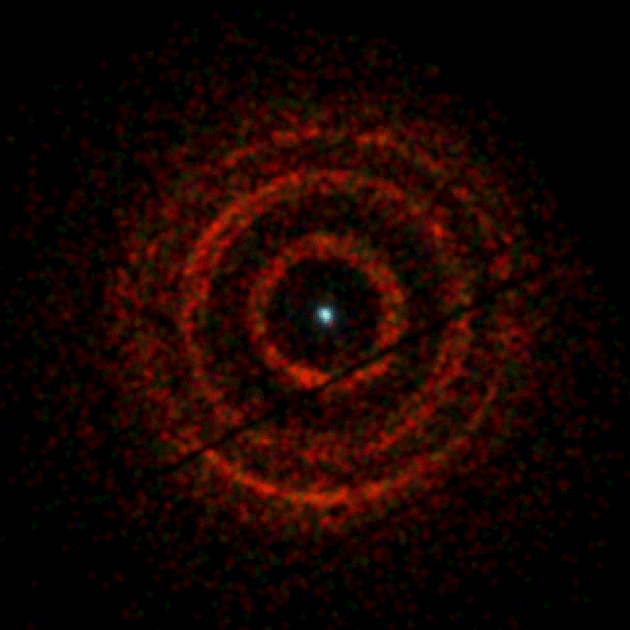It looks like a shooting target, but actually is an image of nested rings of X-ray light centered on an erupting black hole.
Above: Rings of X-ray light centered on V404 Cygni, a binary system containing an erupting black hole (dot at center), were imaged by the X-ray Telescope aboard NASA’s Swift satellite from June 30 to July 4. Credit: Andrew Beardmore (Univ. of Leicester) and NASA/Swift
Top image: The Swift X-ray image of V404 Cygni covers a patch of the sky equal to about half the apparent diameter of the full moon. This image shows the rings as they appeared on June 30. Credits: NASA’s Scientific Visualization Studio (left), Andrew Beardmore (Univ. of Leicester); NASA/Swift (right)
On June 15, NASA’s Swift satellite detected the start of a new outburst from V404 Cygni, where a black hole and a sun-like star orbit each other. Since then, astronomers around the world have been monitoring the ongoing light show.
On June 30, a team led by Andrew Beardmore at the University of Leicester, U.K., imaged the system using the X-ray Telescope aboard Swift, revealing a series concentric rings extending about one-third the apparent size of a full moon. A movie made by combining additional observations acquired on July 2 and 4 shows the expansion and gradual fading of the rings.
Astronomers say the rings result from an “echo” of X-ray light. The black hole’s flares emit X-rays in all directions. Dust layers reflect some of these X-rays back to us, but the light travels a longer distance and reaches us slightly later than light traveling a more direct path. The time delay creates the light echo, forming rings that expand with time.
Detailed analysis of the expanding rings shows that they all originate from a large flare that occurred on June 26 at 1:40 p.m. EDT. There are multiple rings because there are multiple reflecting dust layers between 4,000 and 7,000 light-years away from us. Regular monitoring of the rings and how they change as the eruption continues will allow astronomers to better understand their nature.
Beardmore said:
“The flexible planning of Swift observations has given us the best dust-scattered X-ray ring images ever seen. With these observations we can make a detailed study of the normally invisible interstellar dust in the direction of this black hole.”
source NASA






Leave A Comment